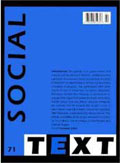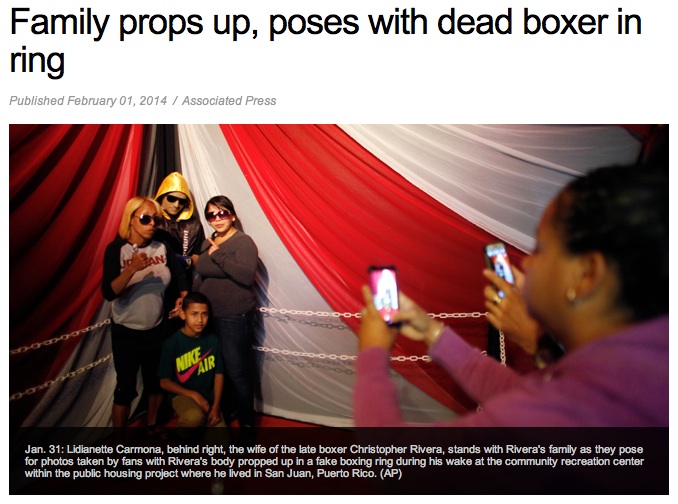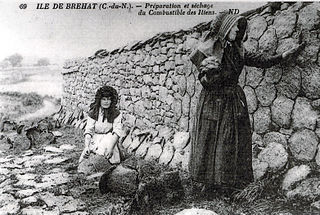The infallible harbinger around these parts, more reliable even than bulbs abloom, buds on the Japanese maple tree, and the quicksilver trilling of our resident mockingbird back from his southern sojourn to show off his new repertoire: the sound of our local ice-cream truck meandering around the neighborhood while playing a tinny rendition of “Turkey in the Straw” over its loudspeaker. Which I can never hear without remembering fragments of the off-color version all the sixth-grade boys (at P.S. 41 in Greenwich Village, but perhaps nationwide) learned to sing in the mid-’50s, “Do Your Balls Hang Low?”
Can you tie ’em in a knot? Can you tie ’em in a bow? Season’s greetings to you.
Something to Remember You By
Back in February I highlighted the bizarre “thematic wake” of murdered Puerto Rican boxer Christopher Rivera Amaro, in which, at the family’s request, a mortuary presented the cadaver, tricked out in its former occupant’s boxing outfit, standing up in a makeshift boxing ring, so that mourners could include the corpse in their selfies.
It gets weirder. Turns out families in Washington, DC are ordering morgue photos of District homicide victims, glossy prints of which the local government sells for $10 each. (Regulations on this practice vary from state to state, according to Peter Hermann’s January 11, 2012 report in the Washington Post.
There’s a tradition of postmortem photography in many cultures, though it became uncommon in the States by 1940 or so. However, most postmortem images get made in the mortuary, with the body dressed and cosmetically repaired if necessary. The rawness of morgue pictures makes them unusual keepsakes. But there you are.
GIGO, or, Pulling Your Academic Leg (of Lamb)
 Having commented previously on the recent revelations that most published research findings are false, I can’t claim surprise at the revelation that Haruko Obokata of the Riken Institute in Japan fabricated her stem-cell research results (just as Prof. Hwang Woo-suk of Seoul National University cooked the books a decade ago when constructing his now-infamous “breakthrough” findings in the same discipline).
Having commented previously on the recent revelations that most published research findings are false, I can’t claim surprise at the revelation that Haruko Obokata of the Riken Institute in Japan fabricated her stem-cell research results (just as Prof. Hwang Woo-suk of Seoul National University cooked the books a decade ago when constructing his now-infamous “breakthrough” findings in the same discipline).
Nor, after proposing ways in which humanities scholars could generate research papers automatically, does it shock me to learn that computer-generated scientific papers have begun to flood the literature. Back in 2005, three MIT graduate students, Jeremy Stribling, Dan Aguayo and Maxwell Krohn, created SCIgen, “a program that generates random Computer Science research papers, including graphs, figures, and citations,” to test the editorial standards of scientific journals and conferences.
Using SCIgen’s output, they got papers accepted for publication and for presentation at conferences — even organizing and moderating a “technical” session at one conference, at which they presented “three randomly-generated talks.” You can download a movie of the event at the above link.
The trio made SCIgen available online as open-source freeware a decade ago, intending and expecting it to get used “to maximize amusement, rather than coherence.” As an unintended consequence, however, according to the February 24, 2014 report by Richard Van Noorden in the journal Nature, the field has begun to encounter a deluge of computer-produced nonsense, some of it making its way into print. (See Van Noorden’s story, “Publishers withdraw more than 120 gibberish papers.”)
As Ian Sample notes in his February 26 commentary in The Guardian (UK), “16 gobbledegook papers created by SCIgen had been used by German academic publisher Springer” and “[m]ore than 100 more fake SCIgen papers were published by the US Institute of Electrical and Electronic Engineers (IEEE). Both organisations have now taken steps to remove the papers,” he adds. (Click here for my own first effort, “Contrasting I/O Automata and Link-Level Acknowledgements.” While I was at it, I also produced a second paper via a comparable math-specific program, MathGen: “On the Description of Pairwise Irreducible Functions.” Impressive, no?)
French researcher Cyril Labbé, whose investigation revealed the publication of the fraudulent papers, thoughtfully created a program to enable their detection, also freely available online. Thus editors and conference organizers can easily detect such fakes, and have no excuses for letting any slip by.
 But others will create such programs, ever more sophisticated, their output increasingly harder to separate from authentic scholarship. And if this can happen in the hard sciences, where (at least historically) rigorous standards of verification and testing obtain, I can only imagine how much such balderdash will slip through in the humanities, with their scientistic pretensions accompanied by relatively lax controls.
But others will create such programs, ever more sophisticated, their output increasingly harder to separate from authentic scholarship. And if this can happen in the hard sciences, where (at least historically) rigorous standards of verification and testing obtain, I can only imagine how much such balderdash will slip through in the humanities, with their scientistic pretensions accompanied by relatively lax controls.
The Alan Sokal-Social Text hoax of which I wrote demonstrated those disciplines’ vulnerability to this form of spoofing. We already have the Postmodernism Generator, a version for the humanities of SCIgen for which no one has yet created a detection algorithm.
Garbage In, Garbage Out — so goes the computer adage with the acronym GIGO. With the right faux-scholarly packing, meaningless prose now passes as research and theory in the sciences and humanities. Be very afraid.
Old and In the Way (cont’d)
 Signs of cultural ambivalence toward those of us of the senior persuasion abound. I wrote recently about Will Self’s snarky BBC proposal that we represent “a giant and warty toad squatting on the youth of our society” and should (let me mix metaphors) gracefully put ourselves out to pasture, if not roll over and die.
Signs of cultural ambivalence toward those of us of the senior persuasion abound. I wrote recently about Will Self’s snarky BBC proposal that we represent “a giant and warty toad squatting on the youth of our society” and should (let me mix metaphors) gracefully put ourselves out to pasture, if not roll over and die.
Lacking the integrity that would mandate he begin by targeting elder practitioners of his own medium, writing, or turn his own column over to someone his junior, Self instead chose geezer rockers (Dylan, the Stones) and even those a generation or more younger — “bands of hard-rocking, goatee-flaunting and extravagantly tattooed men in their 40s” — as his prime examples of this “senescent suzerainty.” Presumably the old in all fields and walks of life, or at least those older than Self (who’s in his early 50s), plus some even younger than he, should leave the stage willingly, so that the still younger can take over.
 Paul Solman’s March 18, 2013 PBS report, “Colleges and Universities See Graying Workforce Holding On to Coveted Positions,” would seem to bear this out. From physicists to teachers of creative writing, faculty who struggled for and earned tenured positions often stay in those positions rather than vacating them. This results, presumably, in a “clogged pipeline” that keeps younger faculty in adjunct status.
Paul Solman’s March 18, 2013 PBS report, “Colleges and Universities See Graying Workforce Holding On to Coveted Positions,” would seem to bear this out. From physicists to teachers of creative writing, faculty who struggled for and earned tenured positions often stay in those positions rather than vacating them. This results, presumably, in a “clogged pipeline” that keeps younger faculty in adjunct status.
 Never mind that the post-secondary education industry has energetically eroded the tenure system for decades, offering tenured faculty tempting early-retirement packages specifically for the purpose of replacing them with low-paid, disposable adjunct faculty who’ll get shunted aside before they’re eligible for tenure or kept at a minimal courseload so that, like Walmart “greeters,” they’ll never rise to full-time status with raises, benefits, and other perks. Never mind that, according to another PBS report, “Adjunct professors now make up half of all college faculties, and 76 percent of instructional positions are filled on a contingent basis, according to the American Association of University Professors.”
Never mind that the post-secondary education industry has energetically eroded the tenure system for decades, offering tenured faculty tempting early-retirement packages specifically for the purpose of replacing them with low-paid, disposable adjunct faculty who’ll get shunted aside before they’re eligible for tenure or kept at a minimal courseload so that, like Walmart “greeters,” they’ll never rise to full-time status with raises, benefits, and other perks. Never mind that, according to another PBS report, “Adjunct professors now make up half of all college faculties, and 76 percent of instructional positions are filled on a contingent basis, according to the American Association of University Professors.”
Never mind that the creation of this class of academic migrant workers — “paid an average of $2,000-$3,000 per class, with few to no benefits,” Arik Greenberg of PBS points out — profits the post-secondary education industry enormously, by making it a buyers’ market for teaching jobs as well as by ensuring that grateful, easily replaceable adjuncts aware of their precarious positions within that system will not likely rock the boat in any way. So when Nicholas Kristof, in a recent New York Times op-ed (“Professors, We Need You!”, February 15, 2014), calls on academics to engage more actively in public discourse on policy issues, he offers no corollary advice on how to do so without jeopardizing one’s academic career if untenured.
And certainly nevermind that the intrepid investigative reporters at PBS choose not to tell that version of the story.
Unquestionably, the tenure system embodies some problems, which deserve the serious consideration and proposal for revision that they receive from Adam Grant in his February 5, 2014 op-ed for the New York Times, “A Solution for Bad Teaching.” (This doesn’t mean I agree with him entirely, and I don’t see how his idea would work in post-secondary studio programs in the fine arts, performing arts, and creative writing.) But the number of tenure-track positions has decreased, both numerically and proportionally, over the past decades. If the post-secondary industry has its way (and it will), tenure will get gradually phased out, retained only for certain high-profile faculty whose research burnishes an institution’s reputation.
That’s the pattern I see, and one I have written about often over the years. According to recent research, pattern recognition comes high on the list of skills that constitute the wisdom of older people. It emerges from thoughtful consideration of accumulated experience, by definition therefore unavailable to the young.
I’ve never had a tenure-track teaching job; I turned down two such offers, so I could continue my work as a critic. I’ve never held a full-time staff position on a newspaper or magazine; I turned down such an offer (the only one ever) from the New York Times. So I don’t represent job-holders, in or out of academe, who’ve decided to keep at it; instead, I’m an independent contractor who’s opted not to close up shop. Still, do an increasing number of us oldsters refuse to go play golf and bridge or sip lemonade in our porch chairs? So it goes. Never too old to rock and roll, I say.
Didn’t You Just Know It Dep’t.
Confirming some people’s worst fears: “Sculptor Louise Bourgeois plumbed depths of female psyche, made giant freaky spiders.” That headline — almost certainly not written by the author of the article — appears on Jennifer Peltz’s Associated Press obituary for Bourgeois, as published in the Christian Science Monitor, June 1, 2010, discovered belatedly and accidentally during an internet search.
Liitle-known fact: I live half a block from a small one-family brick-and wood house that Bourgeois bought in 1981 and reportedly used as a studio. I’ve lived here since 1967; I never once saw her anywhere in the neighborhood.
•
This post supported by a donation from the Estate of Lyle Bongé.










Allan, what a wonderfully bookended post (though I suppose another enclosure metaphor would be better, given the vertical nature of the thing). I recall singing that profound little ditty at summer camp in Minnesota, wondering just how elongated scrota slung over a shoulder in any way resembled continental soldiers, whatever they were, and their equipage.
And then in closing, the link to the supposed Bourgeois house, with the videomaker going inside and revealing nothing but giving voice to children of some disappeared era on the soundtrack (diegetic or otherwise, with stills one can never know). Very poignant.
I followed somanypics to another offering, a beauty titled Hollywood Poetry David’s Loft 1980 – Take Me To The River. Wow. That sent me back to my Manhattan infancy, an insight into the birth of a young adult who arrived in a New York evolving toward apocalyptic. I couldn’t have gone there without your pointing the way through the post. Thanks.
George